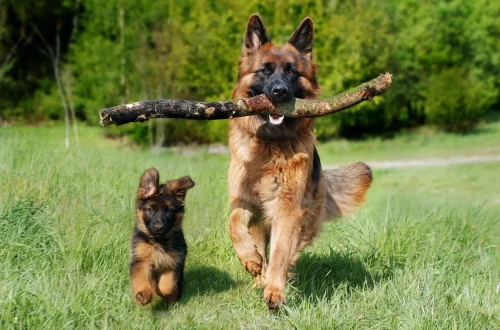
How to Calm a Puppy Barking in a Crate Effectively
Introducing a new puppy into your home is an exciting and joyful experience, but it can also come with its set of challenges. One of the most common issues new pet owners face is dealing with a puppy barking in a crate. This behavior can be distressing for both the puppy and the owner, as it often interrupts peace and creates anxiety for everyone involved. Understanding the reasons behind this barking is crucial to addressing it effectively.
Puppies may bark in their crates for a variety of reasons, including anxiety, fear, or simply the need for attention. Crate training is a valuable tool for housebreaking and providing a safe space for your puppy, but it requires patience and understanding. A barking puppy often signals discomfort or a need that is not being met. Addressing these underlying issues is the key to calming your puppy and creating a positive environment for both of you.
In this article, we will explore various strategies and techniques to help you manage and minimize your puppy’s barking while in the crate. By implementing these methods, you can create a soothing atmosphere that encourages your puppy to feel secure and relaxed in their designated space.
Understanding Why Your Puppy Barks in the Crate
To effectively calm a barking puppy in a crate, it’s essential first to understand the reasons behind the behavior. Puppies are naturally vocal animals, and barking is one of the primary ways they communicate. When placed in a crate, they may feel isolated or anxious, leading them to express their discomfort through barking.
One common reason for barking is separation anxiety. Puppies are social creatures that thrive on companionship, and being confined to a crate can trigger feelings of loneliness and fear. If your puppy has just been separated from their littermates or has recently experienced a change in environment, this anxiety may be intensified. It’s crucial to recognize these signs and provide support to help your puppy adjust.
Another reason for barking could be boredom. Puppies are energetic and curious, and when left alone in a crate without stimulation, they may resort to barking as a way to express their pent-up energy. Ensuring that your puppy has enough physical exercise and mental stimulation before being crated can significantly reduce this behavior.
Additionally, puppies may bark to get your attention. If your puppy learns that barking results in you coming to check on them, they may continue this behavior as a way to seek interaction. Understanding these motivations can help you develop a more effective strategy for addressing your puppy’s barking.
Creating a Positive Crate Environment
A crucial step in calming a barking puppy is to create a positive and inviting crate environment. The crate should be a place where your puppy feels safe and comfortable, not a place of confinement or punishment. Here are some tips to enhance the crate experience:
First, ensure that the crate is appropriately sized. Your puppy should have enough space to stand up, turn around, and lie down comfortably. If the crate is too large, it may promote a sense of insecurity, while a cramped space can lead to discomfort.
Next, make the crate cozy. Adding soft bedding and a few toys can help create a welcoming atmosphere. Consider using a blanket or a piece of your clothing to provide a familiar scent, which can be soothing for your puppy.
Establish a routine around crate time. Puppies thrive on consistency, so try to crate your puppy at the same times each day. This can help them understand that the crate is a regular part of their day, reducing anxiety associated with uncertainty.
Additionally, consider using positive reinforcement. When your puppy enters the crate calmly or remains quiet for a period, reward them with treats or praise. This will help them associate the crate with positive experiences rather than as a source of stress.
Finally, avoid using the crate as a form of punishment. This can lead to negative associations and increase barking and anxiety. Instead, focus on making the crate a safe haven where your puppy can relax and feel secure.
Training Techniques to Reduce Barking
Training techniques play a vital role in reducing crate barking. Consistent and positive training can help your puppy learn appropriate behaviors and develop a sense of security. Here are some effective methods you can implement:
Start with desensitization. Gradually introduce your puppy to the crate by allowing them to explore it without confinement. Leave the door open and encourage them to enter and exit freely. Once your puppy is comfortable, you can begin closing the door for short periods while you are nearby. Gradually increase the duration as your puppy becomes more accustomed to being crated.
Another effective technique is to practice crate training during the day when you are home. This allows you to monitor your puppy’s behavior and provide immediate feedback. If they bark, wait for a moment of silence, and then reward them for being quiet. This teaches them that calm behavior is what earns them attention and rewards.
You might also consider using a specific command, such as “quiet,” to signal your puppy to stop barking. When your puppy barks, calmly say the command. If they stop barking, reward them immediately. Consistency is key, so ensure that everyone in your household uses the same command and approach.
If your puppy’s barking is particularly persistent, you may want to consult a professional dog trainer or behaviorist. They can provide personalized guidance and strategies tailored to your puppy’s specific needs.
Managing Separation Anxiety in Puppies
Separation anxiety is a common issue among puppies, and it can lead to excessive barking when they are crated. Managing this anxiety effectively requires a combination of training, environment adjustments, and sometimes even professional help.
Start by creating a gradual separation routine. Begin by leaving your puppy in the crate for short periods while you are home. Gradually increase the time you are away, allowing your puppy to adjust to the idea of being alone. Always return before your puppy becomes overly anxious to ensure that they associate your departures with positive experiences.
Consider using interactive toys or treat-dispensing puzzles to keep your puppy engaged while crated. These can serve as distractions and provide mental stimulation, reducing anxiety during your absence.
Additionally, leaving a piece of your clothing with your puppy can provide comfort, as they can smell your scent and feel more connected to you even while you are away.
It’s also essential to remain calm during departures and arrivals. Avoid making a big fuss when leaving or returning home, as this can increase anxiety. Instead, keep your greetings low-key to help your puppy feel more secure.
If your puppy’s anxiety persists or escalates, seeking advice from a veterinarian or a professional dog trainer may be necessary. They can recommend additional strategies or interventions to help your puppy cope with separation anxiety more effectively.
In conclusion, managing a puppy’s barking in a crate requires patience, understanding, and consistent training. By creating a positive environment, employing effective training techniques, and addressing any underlying anxiety, you can help your puppy feel secure and calm. Remember, every puppy is unique, and it may take time to find the right approach for your furry friend.
**Disclaimer: This content is not intended as medical advice. For any health-related concerns regarding your pet, please consult a qualified veterinarian.**




